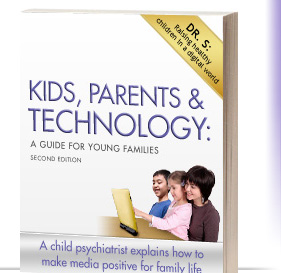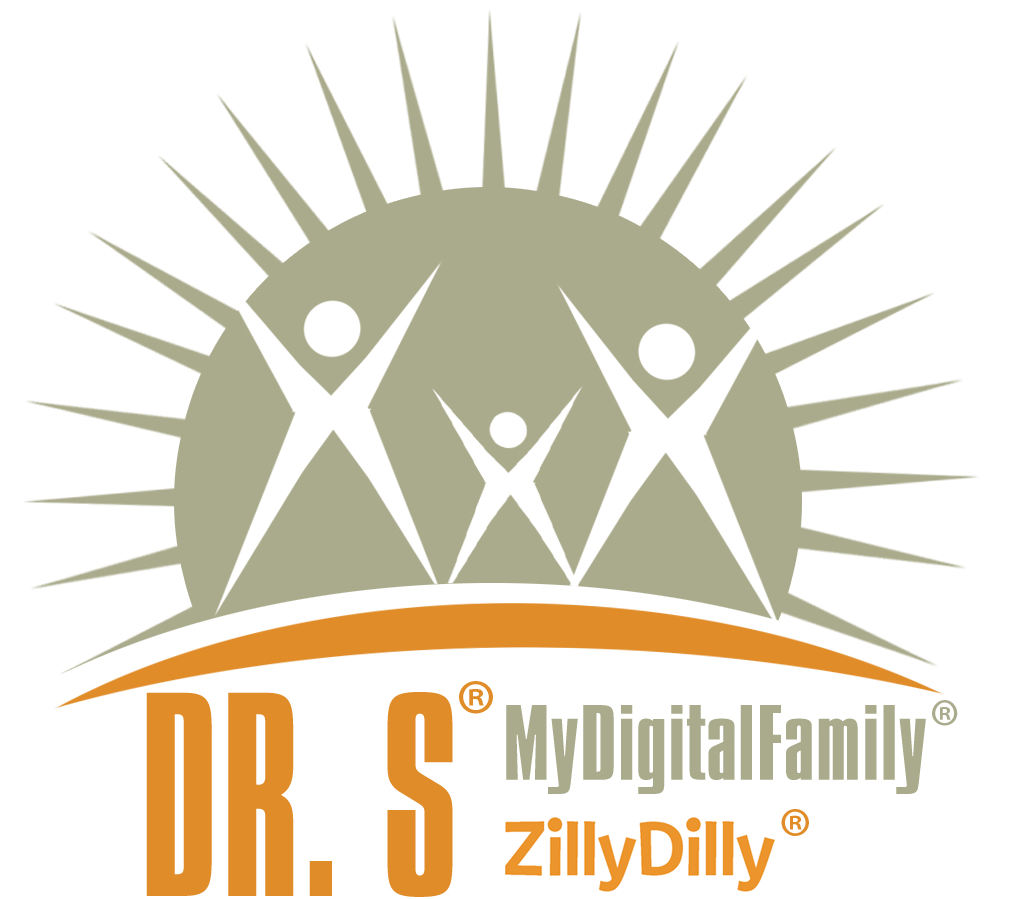11.12.09
New tools, be they iron knives, printing presses, cotton gins, telephones, atomic power, TV, or the currently explosive IT explosion have both predictable and unpredictable, helpful or destructive effects. But they do change things dramatically. E-mail, so-called internet ‘addiction’, etc. are small but important aspects of our responses a much greater set of forces that are upon us. IMH, it is too soon to know where we will end up as the decades and centuries unfold. This is just a beginning that we are groping through.
But I do believe that we should do our best to walk into the future with our eyes as open as possible — and not merely react, but also plan and shape how these forces shape us. Both Freeman and Frostman provide ideas for beginning discussions of what we all need to be aware of. I have researched an aspect of this area and its implications for family life and child development — see www.mydigitalfamily.org – and offer an approach to this challenge.
Here’s a section from my forthcoming KIDS, PARENTS & TECHNOLOGY: A GUIDE FOR YOUNG FAMILIES:
INTERNET ADDICTION, OR, INTERACTIVE MEDIA OVERUSE SYNDROME
(Copyright ©2009 Eitan Schwarz. All rights reserved. www.mydigitalfamily.org.)
The label “addiction” is often used to describe excessive and driven use of interactive media in a manner that interferes with family and social life and productivity. These activities include too much time at video games and online activities like excessive and compulsive surfing, search engine and database searching, shopping, gambling, game playing, involvement with online relationships, and in older kids, sexual behaviors. If such behaviors persist for more than several weeks and impair proper functioning, the child or teenager may be said to be suffering from an addiction, similar to other behavioral addictions like compulsive gambling, sex, exercise, overeating, and shopping.
Whether Internet or other digital technology overuse and behavioral addictions actually share biological mechanisms and should be lumped in with chemical addictions is still controversial among medical experts. At this stage, I believe that the term is overused, misleading, or outright wrong. It may provide the appearance of an easy pseudoscientific explanation that gives a reassuring appearance of knowledge, but it does not necessarily lead to genuine understanding and helpful interventions, and in this way the label may even be dangerous.
Besides, the Web is currently the main interaction kids have with technology, but what will come later? So, rather than “Internet addiction,” I prefer to refer to this very real cluster of symptoms and behaviors associated with interactive media that can affect as many as 10 percent of kids as “Interactive Media Overuse Syndrome.”
The syndrome brings a serious degradation in the child’s quality of life and distorts his/her time management and balance of other priorities. Adolescent boys suffer most frequently. They spend undue time and continue to be preoccupied when away from the media. The teenager may appear excessively busy and undistracted, often performing several tasks quickly, almost frantically, at the same time. He/she stops only with great difficulty. Such children may experience a better mood such as calmness or a pleasant high when online, and withdrawal symptoms like craving and irritability when suddenly stopped or lessened. In addition, he/she needs increasing amounts of exposure to achieve the same pleasant mood. Conflict with parents, with other priorities such as schoolwork or other activities and within him/herself, as well as sensing and not liking that he/she is out of control may be other features.
The affected teen may easily relapse even after seeming to have been cured. He/she may also have physical symptoms like poor sleep, hygiene, and eating habits, headaches, dry eyes, carpal tunnel syndrome, and backaches. A little-known hazard is the triggering of epileptic seizures by the flickering screen.
Such teenagers are often depressed to start out with and their Internet and other digital technology overuse may actually have some benefits for them. Studies from all over the world suggest that the syndrome can be associated with (not necessarily causing or caused by) depression, suicidal ideation, and other clinical disorders. Kids with attention deficit hyperactivity disorder and other impulse disorders may also be more vulnerable. How much the syndrome is an expression of an underlying disorder and how much it causes a disorder is uncertain.
Here is what excessive immersion in interactive media can be like: Imagine an adolescent who spends endless hours at the computer in his/her room. His/her life lacks the pattern of daily, weekly, monthly, and yearly rhythms, often tied to natural cycles. He/she lacks a continuous and stable family schedule to orient and anchor him/her. He/she has no set bedtimes and mealtimes. His/her natural rhythms are chaotic and he/she overlooks the calls of nature for as long as he/she can. Holidays, birthdays, anniversaries, school year and vacations, social calendar, religious holidays, seasonal sports, and other family and community events form distant blurs. While he/she may regularly visit some sites, his/her attention is undisciplined, as he/she strays from one empty, ephemeral thrill to the next. He/she lacks a firm grasp of where he/she is in time, place, and person. In cyberspace, he/she is often not quite fully aware of where he/she is, who he/she is to others, and who are the people around him/her. His/her interactive media experiences are intangible, sterile, empty, unsatisfying, and often barely activate his/her dulled senses. Without sufficient anchoring in tangible and definite landmarks, he/she is disoriented, lost, and anxious, becoming increasingly frantic in a search for meaning and a home online. There are few reference points and feeble compasses to guide his/her values and affirm his/her sense of who he/she is and where he/she belongs.
The young man lacks the human relationships that would ground and orient him with real people, in real time, and in real places. He does not have a clear or authentic picture of the “I” that he is and of the “you”, and the “us” in his world. He can never be quite certain if a stranger is trustworthy or even real. For example, he can almost never talk to a real live person at Amazon.com or eBay to hold him accountable in a transaction. Conveniences like e-mail hardly replace mailmen and other humans who regularly inhabit others’ lives. While he can access a friend easily, he does not see her face, posture, or gestures. He does not see her body and its interesting sexual features. He does not hear her nuanced voice and does not know exactly where she is and what she is doing. He cannot form an accurate idea of her reaction to him. While he may text several people at once, he is not fully present in any of these encounters. In this narrow and muddled environment, he cannot gain the confidence that comes from arduous years spent acquiring the social skills that he will need if he will lead a family, business, community, or government. Too much time in this virtual world disorients him and distorts his development. At times he realizes that he is enslaved by powerful impulses, but he feels helpless and is increasingly afraid to risk the challenges of ordinary life.
Doctors are just beginning to study this syndrome, and it is important not to mislabel or misdiagnose a child. Nevertheless, the problem may not be obvious until it is serious, and parents, doctors, and school personnel should be alert. The syndrome has been studied primarily in adolescents. Shy, isolated, and unpopular teenage boys seem most vulnerable, probably because the anonymity of Internet interactions is more productive and comfortable than face-to-face social connections.
The methods described in this book are ways parents can try to prevent entirely or lessen the severity of this syndrome. I believe that a steady family media diet approach from early childhood will immunize children from adverse interactive media effects. If the symptoms persist for more than several weeks and you cannot impact your child’s impairment significantly, I strongly suggest you have your child evaluated by a qualified child and adolescent psychiatrist or another knowledgeable professional expert. Make sure you understand fully what your child is going through and are certain that the plan is reasonable before agreeing to any treatment.



Internet Addiction: A Clinical Disorder?
11.12.09
New tools, be they iron knives, printing presses, cotton gins, telephones, atomic power, TV, or the currently explosive IT explosion have both predictable and unpredictable, helpful or destructive effects. But they do change things dramatically. E-mail, so-called internet ‘addiction’, etc. are small but important aspects of our responses a much greater set of forces that are upon us. IMH, it is too soon to know where we will end up as the decades and centuries unfold. This is just a beginning that we are groping through.
But I do believe that we should do our best to walk into the future with our eyes as open as possible — and not merely react, but also plan and shape how these forces shape us. Both Freeman and Frostman provide ideas for beginning discussions of what we all need to be aware of. I have researched an aspect of this area and its implications for family life and child development — see www.mydigitalfamily.org – and offer an approach to this challenge.
Here’s a section from my forthcoming KIDS, PARENTS & TECHNOLOGY: A GUIDE FOR YOUNG FAMILIES:
INTERNET ADDICTION, OR, INTERACTIVE MEDIA OVERUSE SYNDROME
(Copyright ©2009 Eitan Schwarz. All rights reserved. www.mydigitalfamily.org.)
The label “addiction” is often used to describe excessive and driven use of interactive media in a manner that interferes with family and social life and productivity. These activities include too much time at video games and online activities like excessive and compulsive surfing, search engine and database searching, shopping, gambling, game playing, involvement with online relationships, and in older kids, sexual behaviors. If such behaviors persist for more than several weeks and impair proper functioning, the child or teenager may be said to be suffering from an addiction, similar to other behavioral addictions like compulsive gambling, sex, exercise, overeating, and shopping.
Whether Internet or other digital technology overuse and behavioral addictions actually share biological mechanisms and should be lumped in with chemical addictions is still controversial among medical experts. At this stage, I believe that the term is overused, misleading, or outright wrong. It may provide the appearance of an easy pseudoscientific explanation that gives a reassuring appearance of knowledge, but it does not necessarily lead to genuine understanding and helpful interventions, and in this way the label may even be dangerous.
Besides, the Web is currently the main interaction kids have with technology, but what will come later? So, rather than “Internet addiction,” I prefer to refer to this very real cluster of symptoms and behaviors associated with interactive media that can affect as many as 10 percent of kids as “Interactive Media Overuse Syndrome.”
The syndrome brings a serious degradation in the child’s quality of life and distorts his/her time management and balance of other priorities. Adolescent boys suffer most frequently. They spend undue time and continue to be preoccupied when away from the media. The teenager may appear excessively busy and undistracted, often performing several tasks quickly, almost frantically, at the same time. He/she stops only with great difficulty. Such children may experience a better mood such as calmness or a pleasant high when online, and withdrawal symptoms like craving and irritability when suddenly stopped or lessened. In addition, he/she needs increasing amounts of exposure to achieve the same pleasant mood. Conflict with parents, with other priorities such as schoolwork or other activities and within him/herself, as well as sensing and not liking that he/she is out of control may be other features.
The affected teen may easily relapse even after seeming to have been cured. He/she may also have physical symptoms like poor sleep, hygiene, and eating habits, headaches, dry eyes, carpal tunnel syndrome, and backaches. A little-known hazard is the triggering of epileptic seizures by the flickering screen.
Such teenagers are often depressed to start out with and their Internet and other digital technology overuse may actually have some benefits for them. Studies from all over the world suggest that the syndrome can be associated with (not necessarily causing or caused by) depression, suicidal ideation, and other clinical disorders. Kids with attention deficit hyperactivity disorder and other impulse disorders may also be more vulnerable. How much the syndrome is an expression of an underlying disorder and how much it causes a disorder is uncertain.
Here is what excessive immersion in interactive media can be like: Imagine an adolescent who spends endless hours at the computer in his/her room. His/her life lacks the pattern of daily, weekly, monthly, and yearly rhythms, often tied to natural cycles. He/she lacks a continuous and stable family schedule to orient and anchor him/her. He/she has no set bedtimes and mealtimes. His/her natural rhythms are chaotic and he/she overlooks the calls of nature for as long as he/she can. Holidays, birthdays, anniversaries, school year and vacations, social calendar, religious holidays, seasonal sports, and other family and community events form distant blurs. While he/she may regularly visit some sites, his/her attention is undisciplined, as he/she strays from one empty, ephemeral thrill to the next. He/she lacks a firm grasp of where he/she is in time, place, and person. In cyberspace, he/she is often not quite fully aware of where he/she is, who he/she is to others, and who are the people around him/her. His/her interactive media experiences are intangible, sterile, empty, unsatisfying, and often barely activate his/her dulled senses. Without sufficient anchoring in tangible and definite landmarks, he/she is disoriented, lost, and anxious, becoming increasingly frantic in a search for meaning and a home online. There are few reference points and feeble compasses to guide his/her values and affirm his/her sense of who he/she is and where he/she belongs.
The young man lacks the human relationships that would ground and orient him with real people, in real time, and in real places. He does not have a clear or authentic picture of the “I” that he is and of the “you”, and the “us” in his world. He can never be quite certain if a stranger is trustworthy or even real. For example, he can almost never talk to a real live person at Amazon.com or eBay to hold him accountable in a transaction. Conveniences like e-mail hardly replace mailmen and other humans who regularly inhabit others’ lives. While he can access a friend easily, he does not see her face, posture, or gestures. He does not see her body and its interesting sexual features. He does not hear her nuanced voice and does not know exactly where she is and what she is doing. He cannot form an accurate idea of her reaction to him. While he may text several people at once, he is not fully present in any of these encounters. In this narrow and muddled environment, he cannot gain the confidence that comes from arduous years spent acquiring the social skills that he will need if he will lead a family, business, community, or government. Too much time in this virtual world disorients him and distorts his development. At times he realizes that he is enslaved by powerful impulses, but he feels helpless and is increasingly afraid to risk the challenges of ordinary life.
Doctors are just beginning to study this syndrome, and it is important not to mislabel or misdiagnose a child. Nevertheless, the problem may not be obvious until it is serious, and parents, doctors, and school personnel should be alert. The syndrome has been studied primarily in adolescents. Shy, isolated, and unpopular teenage boys seem most vulnerable, probably because the anonymity of Internet interactions is more productive and comfortable than face-to-face social connections.
The methods described in this book are ways parents can try to prevent entirely or lessen the severity of this syndrome. I believe that a steady family media diet approach from early childhood will immunize children from adverse interactive media effects. If the symptoms persist for more than several weeks and you cannot impact your child’s impairment significantly, I strongly suggest you have your child evaluated by a qualified child and adolescent psychiatrist or another knowledgeable professional expert. Make sure you understand fully what your child is going through and are certain that the plan is reasonable before agreeing to any treatment.